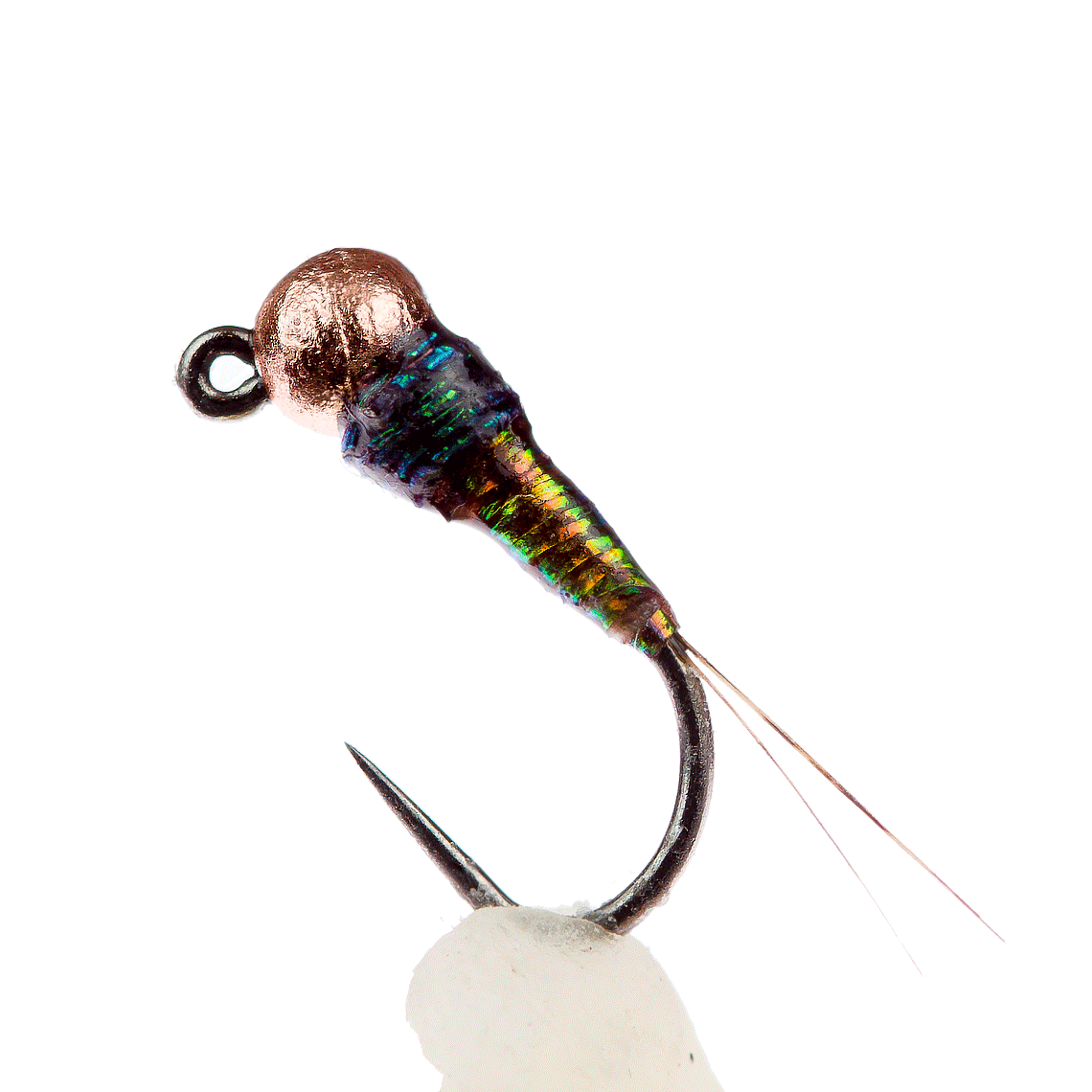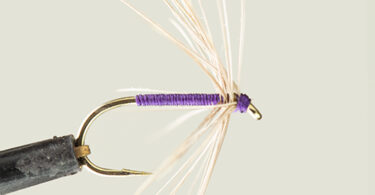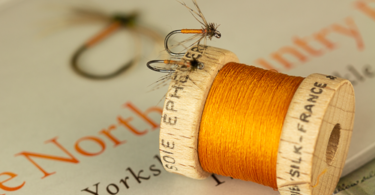This season I decided to expand my ‘Euro nymphing’ techniques of czech and french leader and explore the technique known as spanish nymphing….
Click left tab for article or right tab for recipe to tie the ‘Magic Mary’:

Magic Mary – Perdigon fly
image©JoelBarrow
This season I decided to expand my ‘Euro nymphing’ techniques of czech and french leader and explore the technique known as spanish nymphing. A quick google and there didnt seem to be much to seperate this technique away from french leader fishing whereby a long soft rod is used to cast a long leader 20-30ft with all bar the tippet and flies held off the water for a drag free highly sensitive drift. The big difference I discovered was the regional flies associated with the 2 methods.
French nymphs generally lend themselves to small lightly dressed flies with natural materials such as pheasant tail or fur dubbing and cdc hackles to impart mobility and allow the flies to hold in the water column naturally with tungsten beads and fine tippets to achieve a rapid sink rate. Injections of colour come in the form of a collar or floss tail. By using various tungsten beads and body materials french nymphs can be fished in a variety of situations from a riffle to a smooth glide usig the flies to anchor the rig at a desired depth whatever the flow rate.
Spanish nymphs on the other hand are a stark contrast to the french themed fliesand are known as perdigon translated as pellet or shot from a shot gun cartridge. They are designed to be small and sink fast with little resistance with tungsten beads and tapered bodies covered in UV resin with the finest of tails being the only appendage. The genetics of the Perdigon lends itself to being fished in a high flow section of the river such as fast runs and pockets but also in very thin water at the head of a run.
When fishing with perdigon nymphs I use a different leader setup to my french leader. Instead of a 9m Hends Camou tapered leader I use a Hends Nymphing FlyLine with a 6 inch bi colour braided indicator and then from there 6ft of 7x tippet to first dropper then 2ft to point fly. I use the nymphing line as it loads the rod much easier to cast 2 delicate nymphs. The slim design means they offer no wind resistance like the french nymphs to help load the road and the nymphing line gives much more precision and control.
A typical spot would be a fast run with pocket water and the flies are cast upstream and tracked back dead drift watchimg the indicator for any signs of abnormal movement to signal a take.

Typical Spanish Nymph water Magic Mary – Perdigon fly image©JonathanHoyle
A recent trip to the Yorkshire Calder with Joel to test the Perdigon fly was a great success with 8 fish coming to hand from a typical fast pocket water run in the first 15 minutes.

Another trout falls to the Magic Mary image©JonathanHoyle
The beauty of perdigon flies is that the pattern posibilities are endless with multiple shades of Hends Perdigon, Semperfli Glint Nymph, Semperfly Iridescent Thread, Hends Body Quills, Hends Pearl Round Ribbing and Hends Fluoro Ultrafine tying thread at your disposal.
Magic Mary – Perdigon Fly
Hook: Hends BL120 sz18
Bead: Small Slot Tungsten 2.5mm Copper
Underbody: Semperfli Pure Silk, Straw colour
Body: Hends Perdigon 1/69 Black Copper Shine PBF45
Thorax: Hends Pearl Round Ribbing PRR30
Tail: Coq de Leon
UV resin to finish

Magic Mary – Perdigon fly image©JoelBarrow
Note from Joel: The fly pictured above is one of the variations of the original flies tied by Jonathan for me to test out Hends Perdigon fly tying material. I was immediately struck by this variant and it’s similarity in colouration to the Mary Copperhead Nymph , a fly that has been my go to nymph for many years. Even at this first viewing I was already convinced it was going to be a good fish catcher but I’ve thought that before and not always been right, the only way is to let the fish decide !
Not long after we met up on the banks of the Calder and decided to give the new flies a go. Within minutes we both had fish to the new nymph and then more .. I decided to test it against my gold standard – the Mary Copperhead Nymph and was amazed to find the new fly outfishing it by about 2:1 so effective that I’m sure it upped my catch for the day. Since then it has continued to amaze and catch fish after fish to the point where I started to joke it was a magic fly and that we needed to name it, hence the ‘Magic Mary’ was born !
More on this fly later – hopefully a tying video or a step by step and more about how to fish it.
Tied by Jonathan Hoyle, Image ©Joel Barrow 2017




